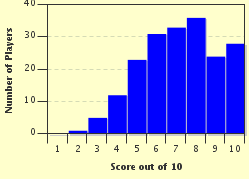Quiz Answer Key and Fun Facts
1. In which of these countries are you most likely to see the sign shown here?
2. At what time of day are you most likely to see kangaroos crossing the road?
3. What is the common name of Macropus rufus, the largest species of kangaroo?
4. This kangaroo's scientific name, Macropus giganteus, is misleading, as its cousin Macropus rufus is definitely larger. However, it is larger than the other macropods with which it shares a habitat. Which of these is NOT a name commonly given to this specimen found in less arid regions than its larger cousins?
5. Macropus fuliginosus, the western grey kangaroo, is mostly found along the southern coast of South Australia and West Australia. In the Murray-Darling basin, its territory overlaps that of its larger cousin, Macropus giganteus. Do these two species interbreed in the wild?
6. Which of these statements about the antilopine kangaroo is NOT true?
7. Only slightly smaller than the macropod species that are officially called kangaroos are a number of species of wallaroo. This is a common wallaroo, Macropus robustus. Their hind feet are relatively short and broad, with rough soles that are thought to help them leap around in their preferred environment. Where are they most commonly found?
8. The common name of Macropus rufogriseus refers to the same anatomical feature as does its scientific name. What is it usually called?
9. This rock wallaby has a baby in her pouch. What is the term used to refer to a young wallaby?
10. Smallest of the macropods featured in this quiz is this little fellow, known by the scientific name of Thylogale billardierii. By what tasty name are they more commonly called?
Source: Author
looney_tunes
This quiz was reviewed by FunTrivia editor
Tizzabelle before going online.
Any errors found in FunTrivia content are routinely corrected through our feedback system.


